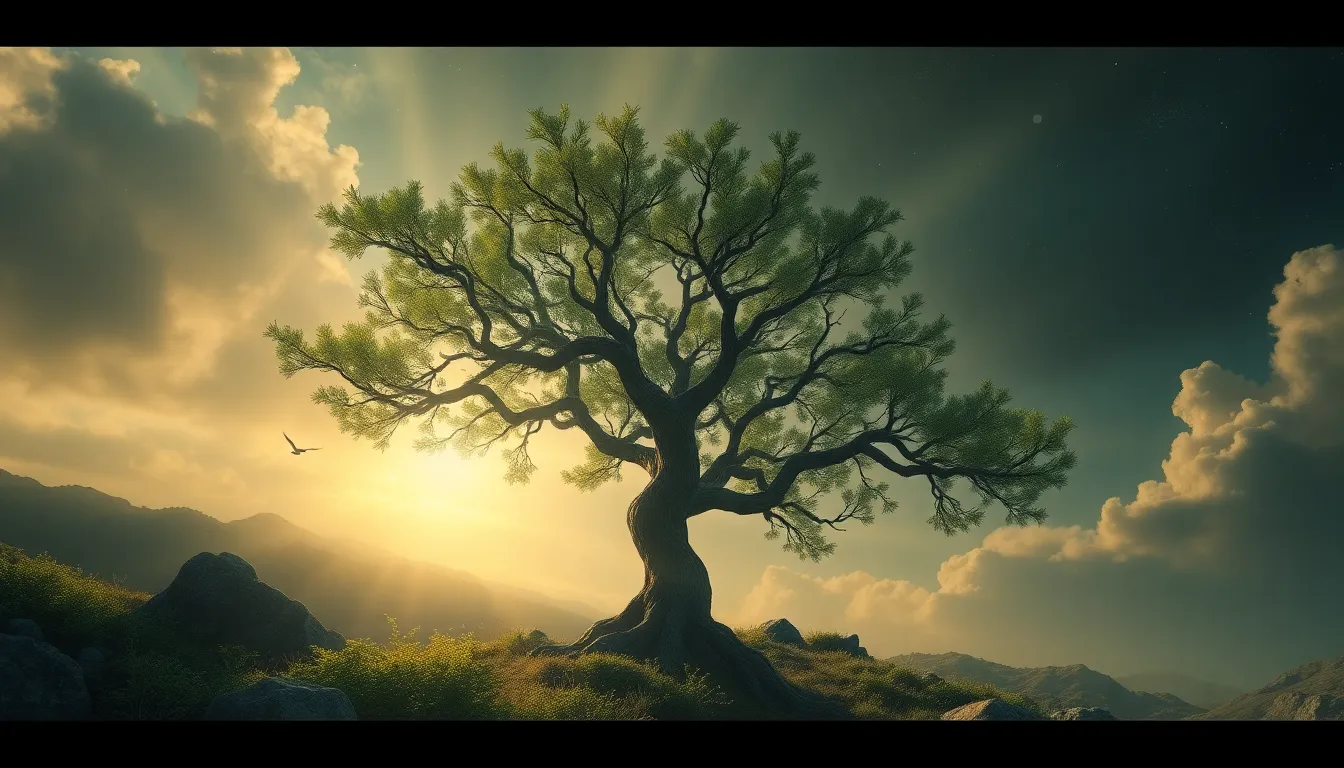The Trickster’s Role in Myth: Chaos or Order?
Introduction to the Trickster Archetype
The trickster is a fascinating archetype found in various mythologies around the world. Defined as a character who uses wit and cunning to outsmart others, the trickster often blurs the lines between hero and villain. Common characteristics of the trickster include cleverness, unpredictability, and a penchant for breaking rules. They can be both a source of chaos and a catalyst for change, making their presence essential in many cultural narratives.
Throughout history, tricksters have played pivotal roles in the stories of different cultures, serving as a reflection of societal values and challenges. Their importance lies not only in their entertaining antics but also in their ability to question and subvert the status quo.
Historical Origins of the Trickster Figure
The trickster figure has deep roots in ancient mythologies. For example:
- Coyote in Native American mythology is often depicted as a creator and a deceiver, embodying the duality of life and death.
- Loki from Norse mythology is known for his cunning nature and ability to manipulate the gods, often leading to chaos.
- Anansi, the spider from West African folklore, is celebrated for his intelligence and resourcefulness, often teaching moral lessons through his exploits.
These trickster figures have evolved over time, adapting to the changing cultural landscapes of their societies while retaining core traits that resonate with universal human experiences.
The Dual Nature of the Trickster: Chaos and Order
The trickster archetype embodies a complex relationship between chaos and order. On one hand, chaos is viewed as a disruptive force that challenges established norms and societal structures. Tricksters often create confusion, breaking rules and defying expectations. On the other hand, order represents the societal mechanisms that maintain stability and cohesion. Tricksters, through their actions, inadvertently restore balance by highlighting the absurdities within rigid systems.
This duality is crucial in understanding the trickster’s role in mythology. They are not merely agents of chaos; rather, they serve as a bridge between the chaotic and the orderly, prompting reflection and dialogue about the nature of existence.
Tricksters as Catalysts for Change
Tricksters are often portrayed as agents of transformation in myths. They initiate change through their cunning and unpredictable actions, challenging societal norms and expectations. Examples include:
- The tale of Anansi, who uses cleverness to outwit stronger opponents, ultimately teaching lessons about intelligence over brute strength.
- Loki’s role in Norse mythology, where his actions lead to significant changes among the gods, including the eventual Ragnarok.
The balance between destruction and creation is a recurring theme in these narratives. As tricksters disrupt the status quo, they open pathways for new ideas and possibilities, prompting societies to reevaluate their beliefs and practices.
Psychological Perspectives on the Trickster
From a psychological standpoint, the trickster can be analyzed through a Jungian lens as a symbol of the unconscious. This archetype represents the parts of ourselves that challenge rational thought and societal expectations. The trickster’s antics can be seen as manifestations of our deeper desires and fears, inviting us to confront the complexities of our psyche.
Moreover, the trickster resonates within contemporary society, where individuals often grapple with their identities amid rigid social constructs. The trickster encourages the exploration of personal freedom and authenticity, serving as a reminder of the importance of embracing our multifaceted nature.
Tricksters in Modern Literature and Media
In modern literature and media, trickster characters continue to thrive. Examples include:
- Tom Sawyer from Mark Twain’s novel, who embodies the trickster spirit through his adventures and cleverness.
- Jack Sparrow from the “Pirates of the Caribbean” series, whose unpredictable nature and cunning tactics captivate audiences.
- Deadpool in comic books and films, who breaks the fourth wall and challenges traditional superhero narratives.
These modern interpretations of tricksters maintain relevance by addressing contemporary social issues, such as identity, morality, and the complexities of human relationships. They reflect the enduring legacy of the trickster archetype in navigating the challenges of modern life.
Cultural Variations of the Trickster
Trickster myths vary significantly across cultures, influenced by regional beliefs and values. For instance:
- In African cultures, tricksters often embody wisdom and teach moral lessons through their cleverness.
- In Asian mythologies, figures like the Monkey King in “Journey to the West” challenge authority and embody the spirit of rebellion.
- In European folklore, characters like Reynard the Fox exemplify cunning and the ability to outsmart more powerful foes.
The significance of cultural context in shaping the trickster’s role cannot be understated. Each culture imbues its trickster with unique characteristics that reflect its values and societal challenges, enriching the global tapestry of mythology.
The Trickster’s Moral Ambiguity
Moral ambiguity is a hallmark of the trickster figure, presenting dilemmas that challenge conventional morality. Tricksters often operate outside the bounds of societal norms, leading to actions that can be perceived as both good and bad. This duality raises questions about the nature of morality and the complexities of human behavior.
By challenging established moral frameworks, tricksters force societies to confront their values and beliefs, prompting critical reflection on what is considered right or wrong. This exploration of moral ambiguity has profound implications for understanding societal values and the human condition.
The Trickster’s Influence on Folktales and Legends
The legacy of trickster figures is evident in the folktales and legends that have been passed down through generations. These stories serve not only as entertainment but also as educational tools, conveying lessons and morals to younger audiences. Trickster tales often encapsulate essential cultural values and beliefs, preserving cultural identity.
Through their clever antics and transformative journeys, tricksters impart wisdom about resilience, intelligence, and the importance of questioning authority. These narratives remain relevant, continuing to inspire new generations with their timeless lessons.
Conclusion: The Enduring Legacy of the Trickster
The trickster archetype holds a profound place in mythology, representing the intricate dance between chaos and order. Their ability to challenge norms, catalyze change, and embody moral ambiguity ensures that they remain relevant across cultures and generations. As society continues to evolve, the trickster will undoubtedly adapt, continuing to serve as a mirror reflecting the complexities of human nature and the ever-changing landscape of our world.



